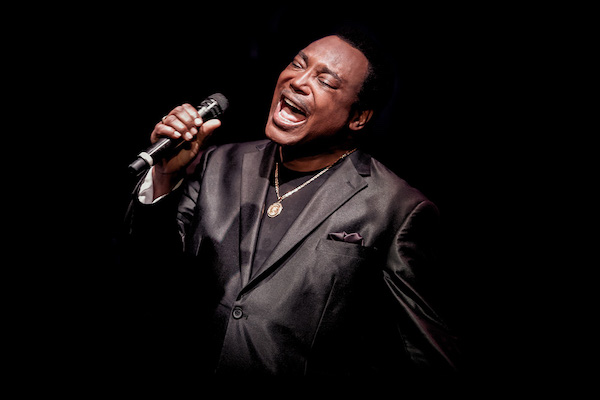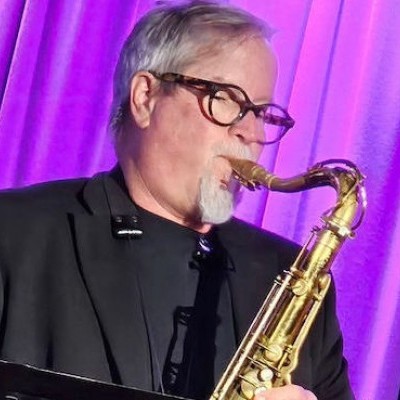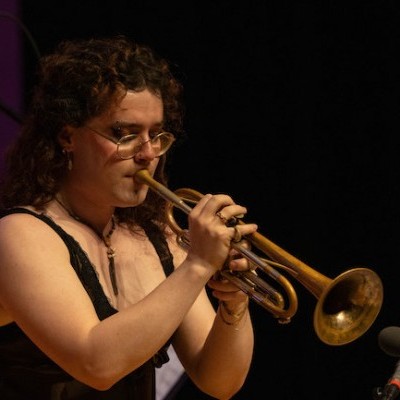Oct 28, 2025 10:47 AM
In Memoriam: Jack DeJohnette, 1942–2025
Jack DeJohnette, a bold and resourceful drummer and NEA Jazz Master who forged a unique vocabulary on the kit over his…

George Benson’s latest album was recorded live at Ronnie Scott’s in London.
(Photo: Carl Hyde)As an 8-year-old busker, George Benson boasted a big voice and a broken-down ukulele that he wielded with prodigious skill. By all accounts, his act was something of a spectacle on the streets of postwar Pittsburgh.
So, it was no surprise that when word of the child prodigy reached singer Eddie Jefferson—like Benson, a Pittsburgh native—the pioneer of jazz vocalese was compelled to go see the kid. Jefferson was both impressed and amused. “He and a friend both fell on the ground laughing when they heard me singing one of his songs,” Benson recalled during a September phone call with DownBeat.
Despite his current status as a global superstar, Benson, 77, has never forgotten those early days. On a July night in 2019 at Ronnie Scott’s in London, he performed the tune that made Jefferson famous—“Moody’s Mood For Love”—deftly massaging the words crafted for saxophonist James Moody’s solo. The interpretation, documented on Benson’s latest album, Weekend In London (Provogue), is at once a tribute to his own gifts and an homage to his predecessor’s.
“Eddie Jefferson was gigantic to me because he was an innovator,” Benson said.
The guitarist’s own status as a jazz innovator has sometimes been obscured by his success in generating pop hits, some of which—notably “Give Me The Night,” the title track from a 1980 album produced by Quincy Jones—appear in live versions on Weekend In London. But the many honors he has garnered—among them a 2009 NEA Jazz Masters fellowship, 10 Grammy awards and his induction, via the 2020 Readers Poll, into the DownBeat Hall of Fame—attest to his standing as a creative force.
So, too, does the praise of a multigenerational cohort of colleagues. John Scofield, 68, said he was first dazzled by Benson on hearing his second and third albums, It’s Uptown (1966) and The George Benson Cookbook (1967). Produced by John Hammond for Columbia Records, the recordings showcase Benson’s fleet fingers in the familiar setting of an organ combo. Scofield said he was so taken by the albums that as a freshman at Berklee in 1970, he made sure to catch Benson’s gig at the Boston club The Jazz Workshop.
“It blew my mind,” he recalled. “I’ve been a fan ever since.”
Laughingly admitting to stealing licks from Benson, Scofield said it was the fluidity of his articulation that was most impressive: “He has this technical thing he can do on the guitar where he plays something nobody else can play. There are only a couple of guys like that in the history of jazz guitar. Django Reinhardt and Wes Montgomery come to mind—and George.

Jack DeJohnette boasted a musical resume that was as long as it was fearsome.
Oct 28, 2025 10:47 AM
Jack DeJohnette, a bold and resourceful drummer and NEA Jazz Master who forged a unique vocabulary on the kit over his…

“I’ve told students, ‘I don’t mind if you use AI for this or that project,’” says MIT’s Pascal Le Boeuf. “‘But you need to tell me.’”
Sep 18, 2025 11:14 AM
A standard joke when it comes to discussing artificial intelligence, or AI, is that it’s developing so rapidly that…

Chuck Manning Works for NASA … and plays jazz.
Sep 18, 2025 11:23 AM
Congratulations! After years of study, you’ve earned your degree in jazz performance. But let’s face it: Making a…

Always a sharp dresser, Farnsworth wears a pocket square given to him by trumpeter Art Farmer. “You need to look good if you want to hang around me,” Farmer told him.
Sep 23, 2025 11:12 AM
When he was 12 years old, the hard-swinging veteran drummer Joe Farnsworth had a fateful encounter with his idol Max…

“Make time and energy to meet people and make friends,” suggests Millie Ahearn, a student at DePaul University.
Sep 18, 2025 11:32 AM
For many students, the transition into a collegiate jazz program can feel overwhelming — new peers, unfamiliar…